Abstract
A national household coverage survey of 3697 Ecuadorean children, carried out in July 1986, provided an opportunity for a cost-effectiveness analysis of (1) routine vaccination services based in fixed facilities and (2) mass immunization campaigns. A major purpose of the campaigns was to complement the routine services and to accelerate immunization activities. Based on the coverage survey, the Program for Reduction of Maternal and Childhood Illness (PREMI) and earlier campaigns increased the proportion of children under 5 years who were fully vaccinated from 43% to 64%. In one year, the PREMI campaign was responsible for fully vaccinating 11% of children under one year, 21% of 1-2-year-old children, and 13% of all children under 5 years. The campaign also helped ensure that vaccinations were completed when children were still very young and at greatest risk. The average cost per vaccination dose (in 1985 US$ prices) was approximately $0.29 for fixed facilities and $0.83 for the PREMI campaign. Total national costs were $675,000 and $1,665,000 for routine and campaign services respectively. The cost per fully vaccinated child (FVC) was $4.39 for routine vaccination services and $8.60 for the campaign. The cost per death averted was about $1900 for routine vaccination services, $4200 for the PREMI campaign, and $3200 for the combined programme. Because of Ecuador's lower mortality rates, the costs per death averted in Ecuador from both vaccination strategies are not as low as those from studies of vaccinations in Africa. The campaigns, though less cost-effective than routine services, significantly improved the vaccination coverage of younger children who had been missed by the routine services. The costs per FVC of both the campaign and the routine services compare favourably with such programmes in other countries.
Full text
PDF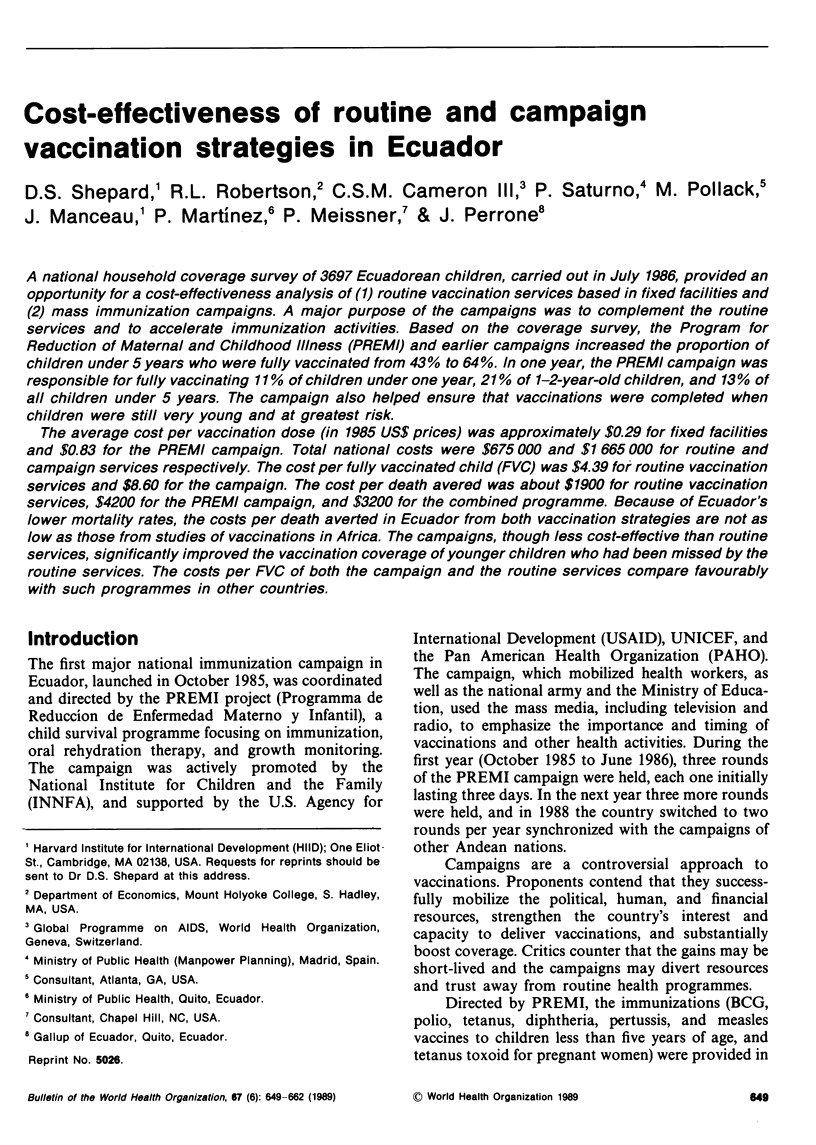

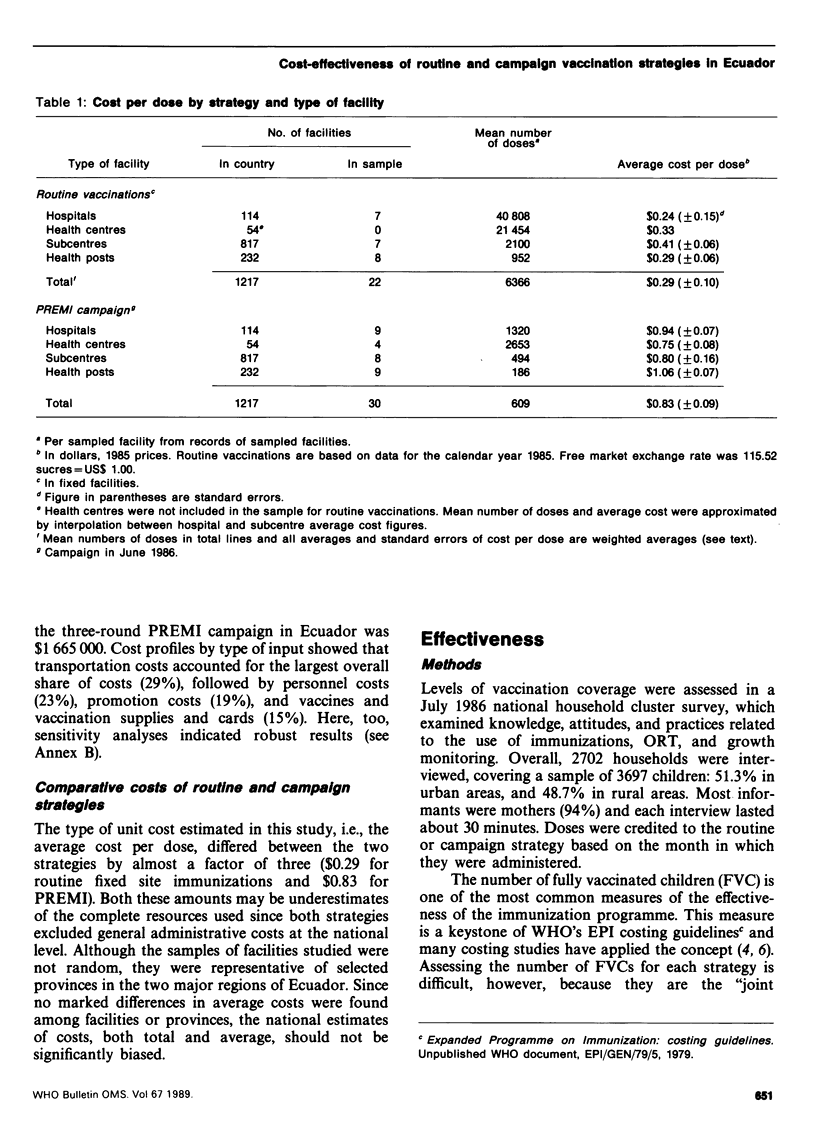
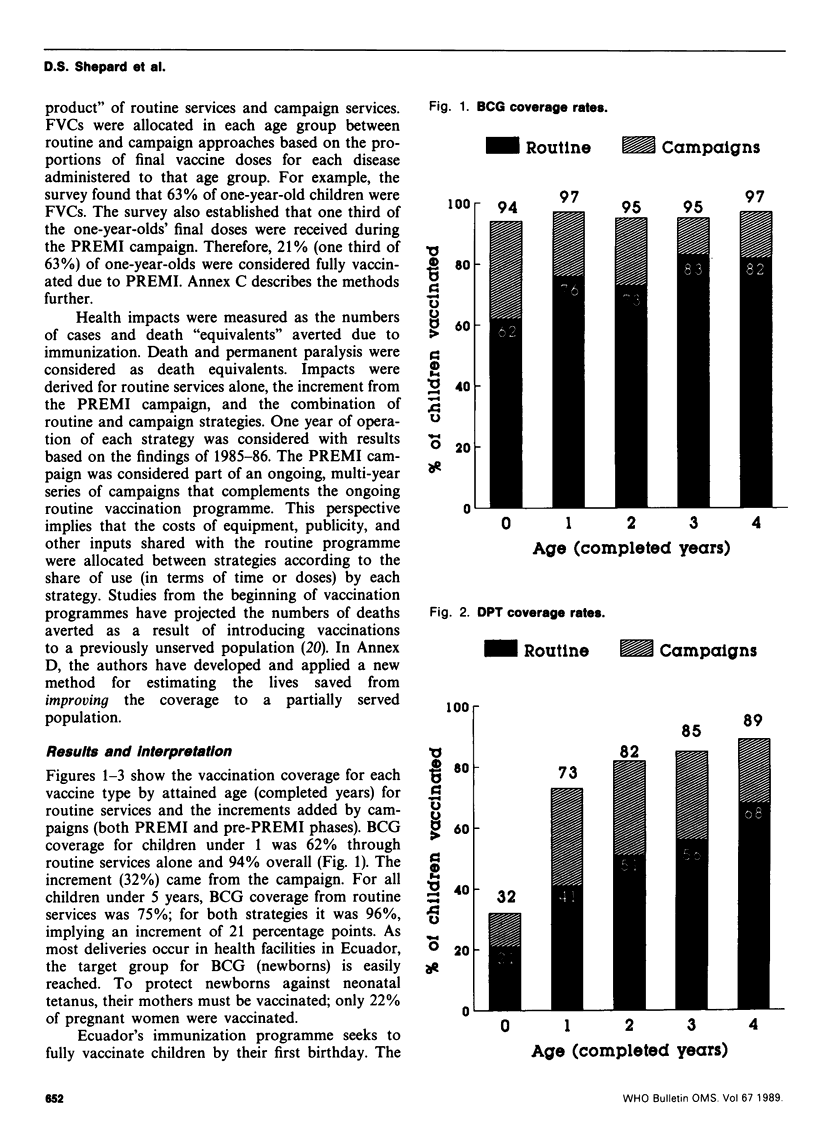
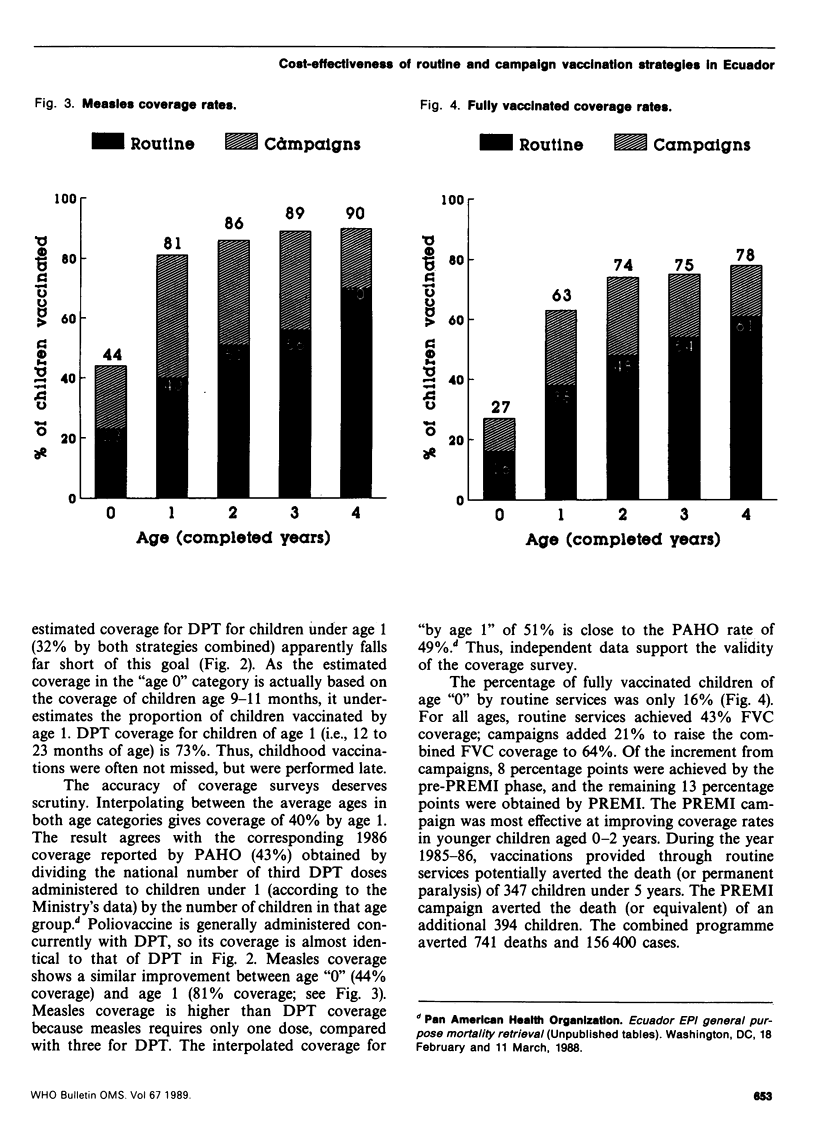
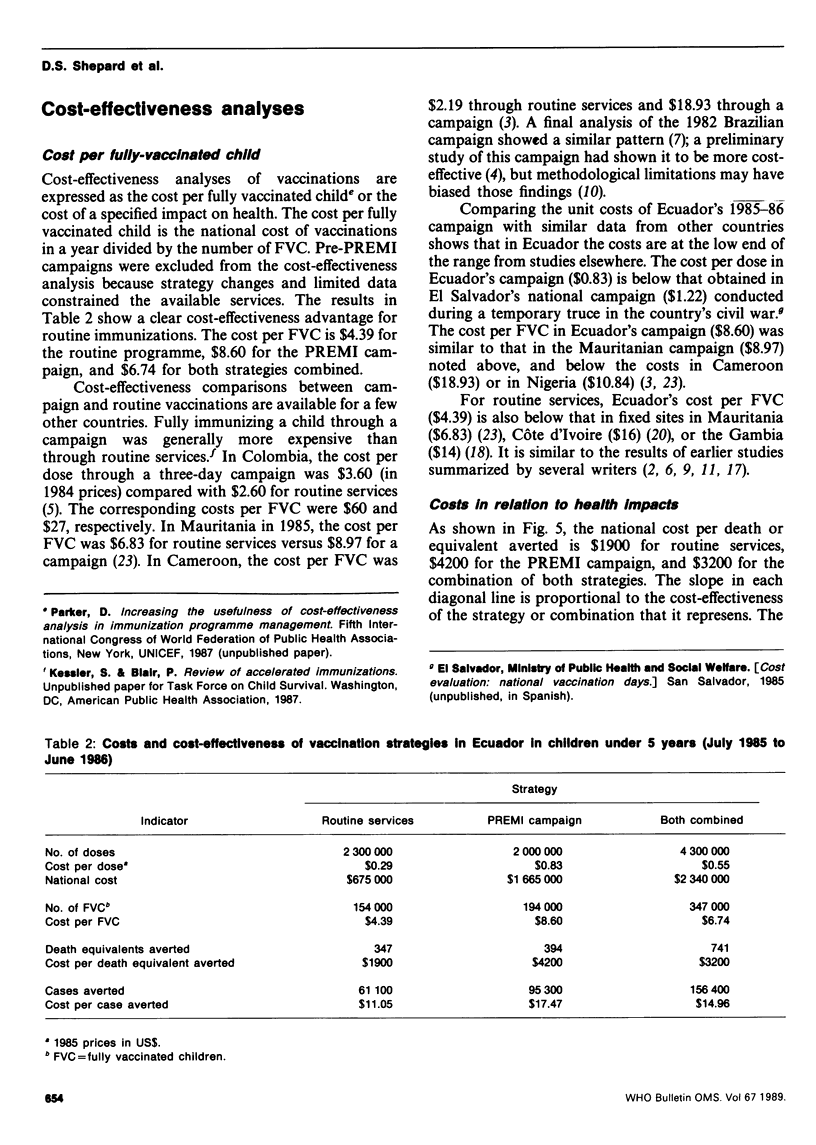
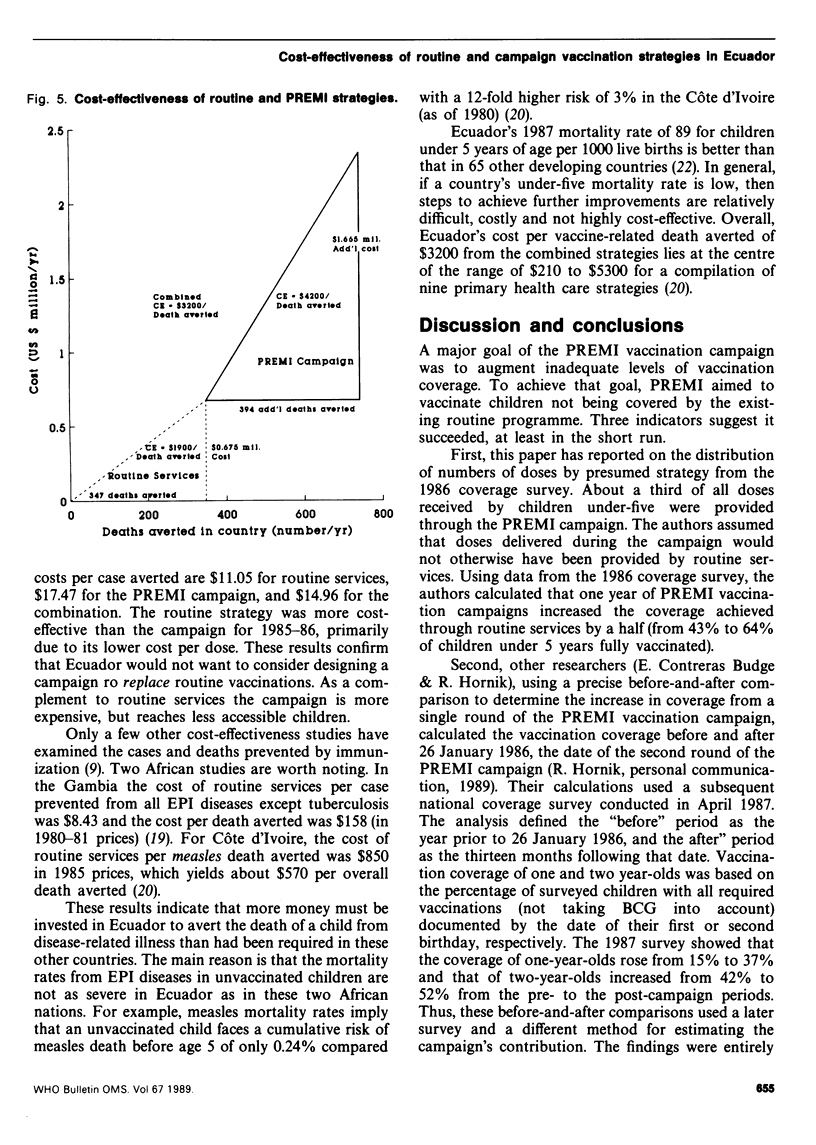
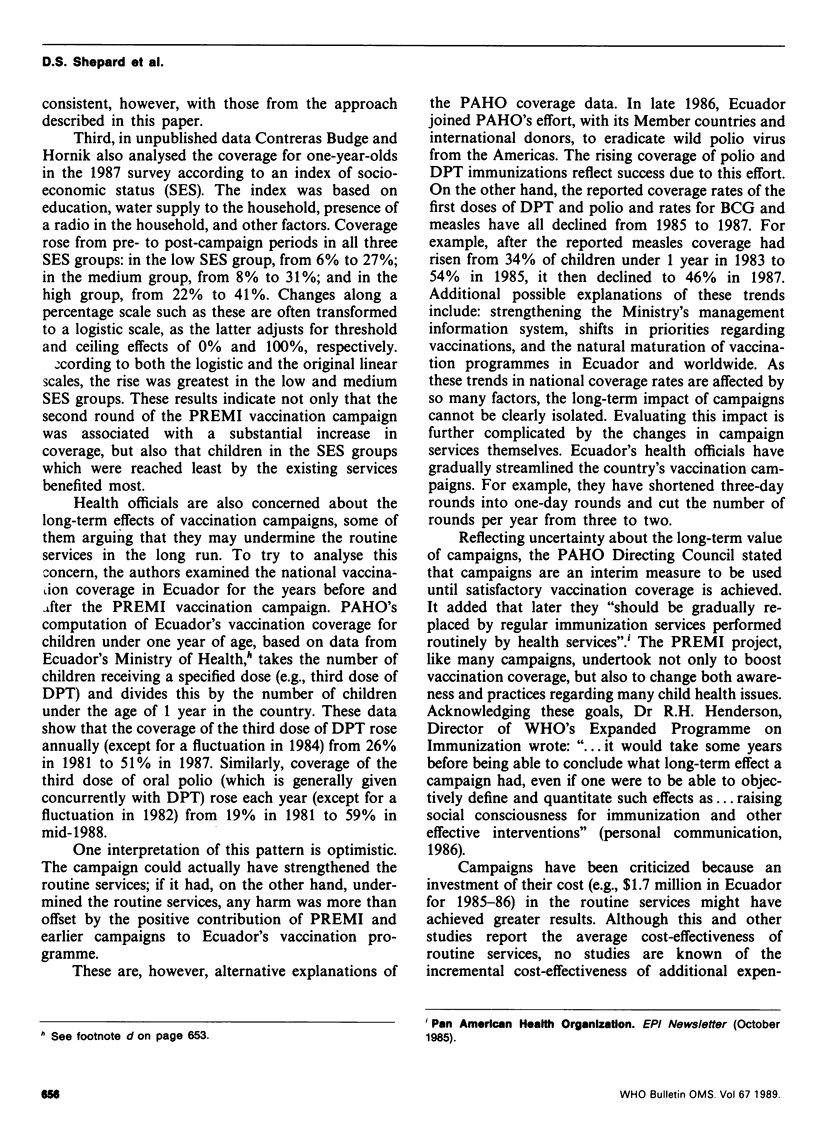
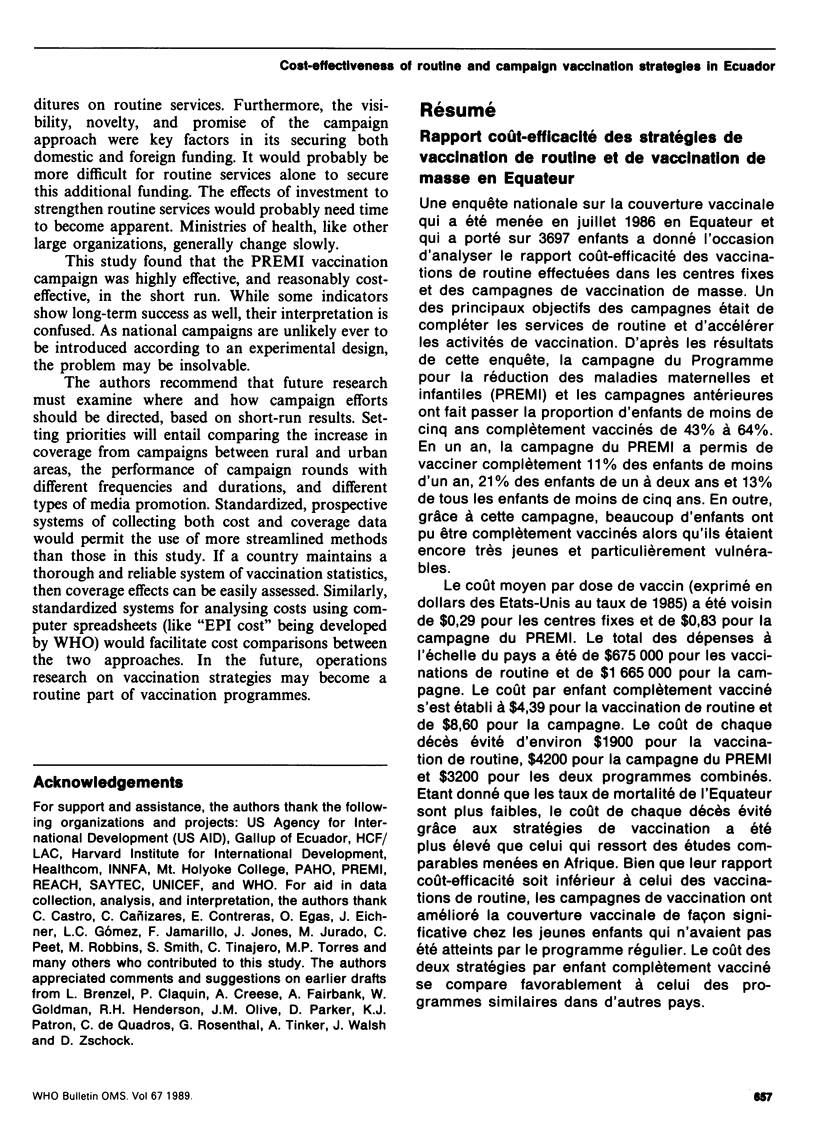
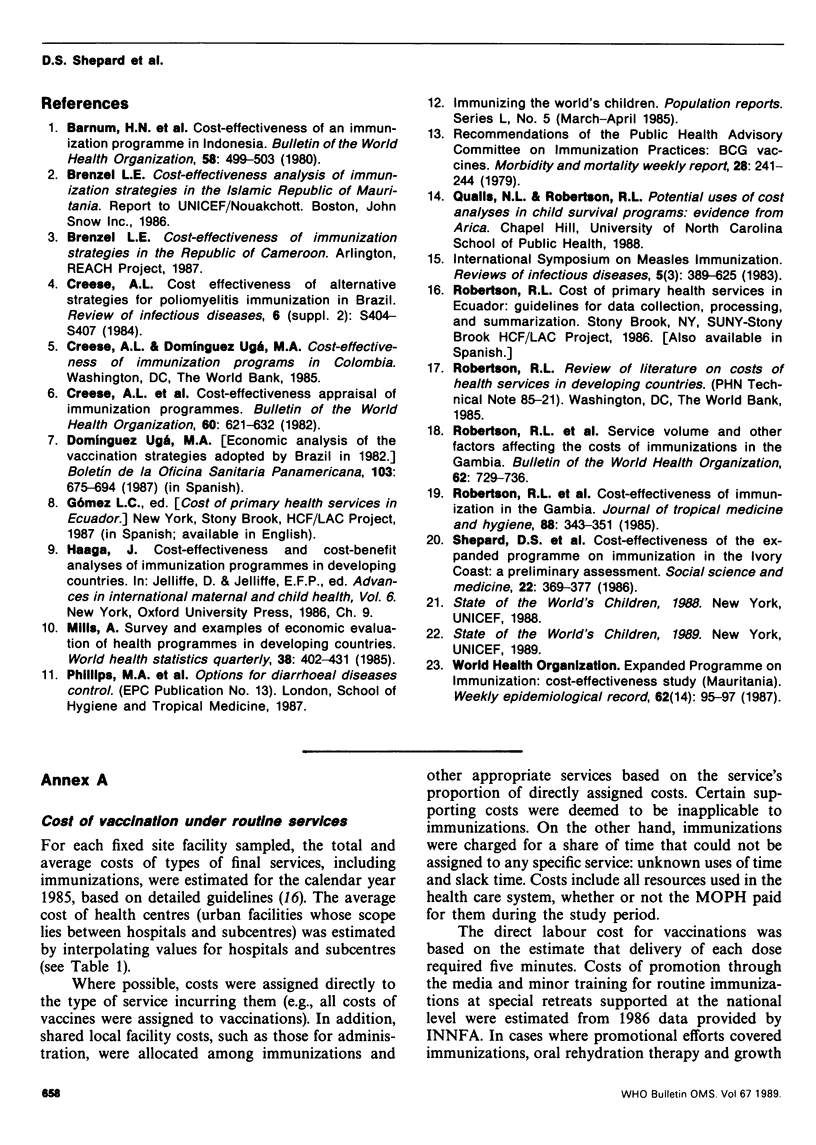
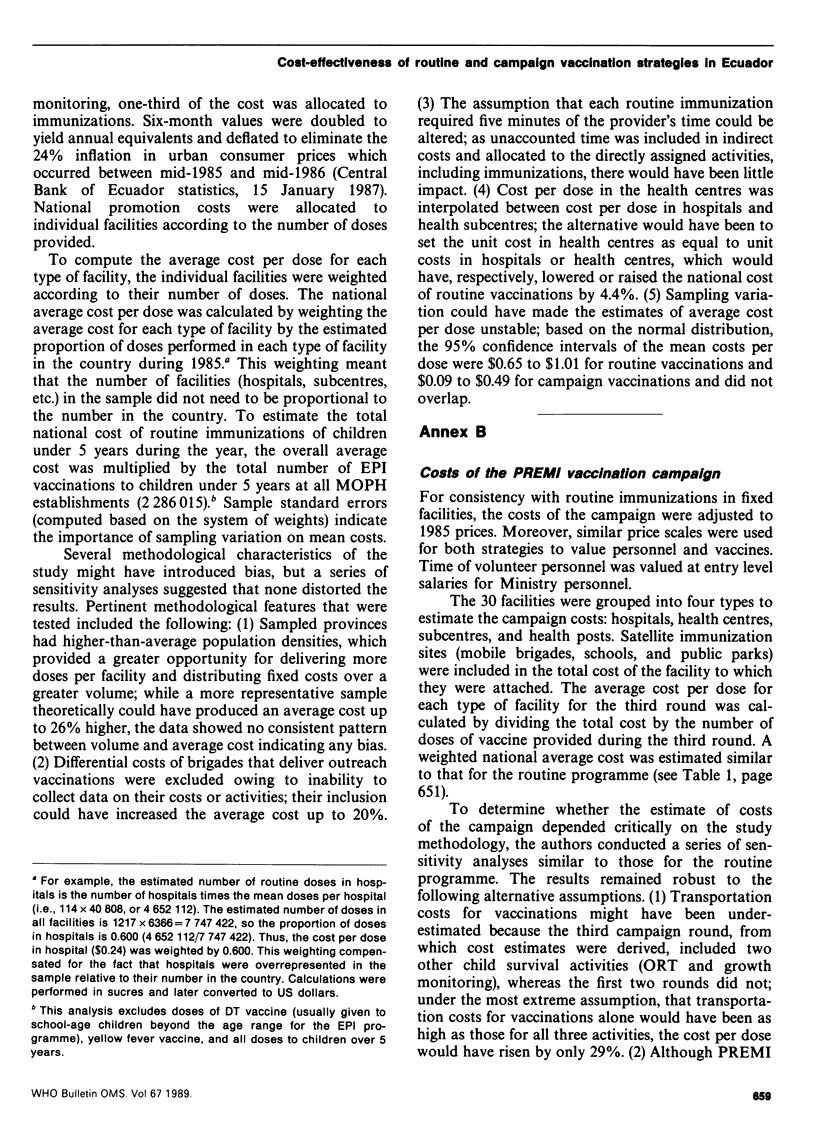
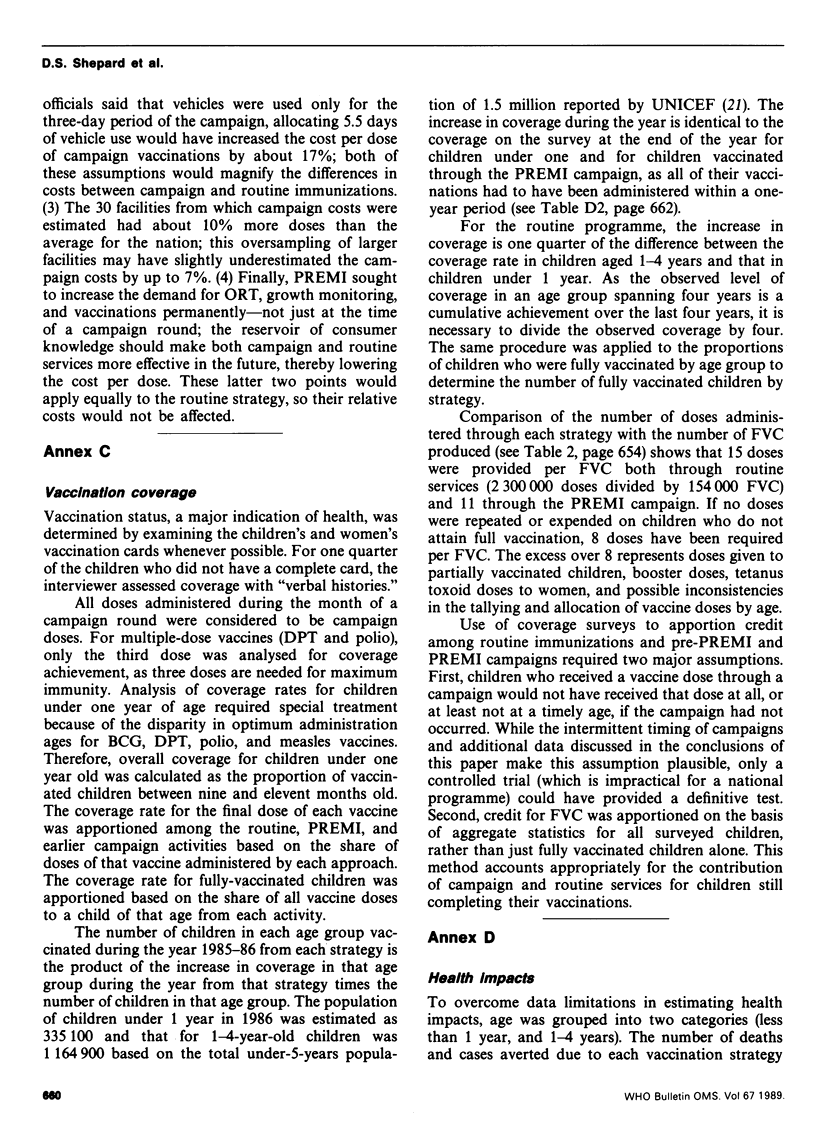
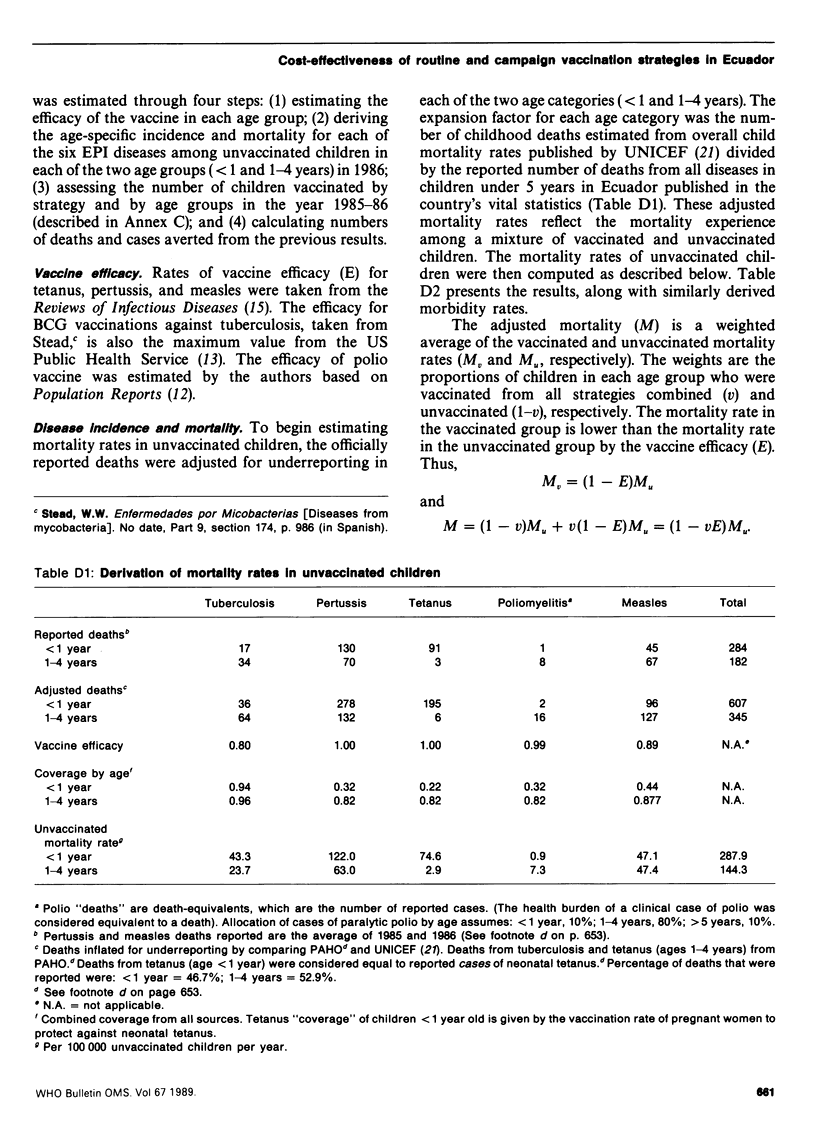
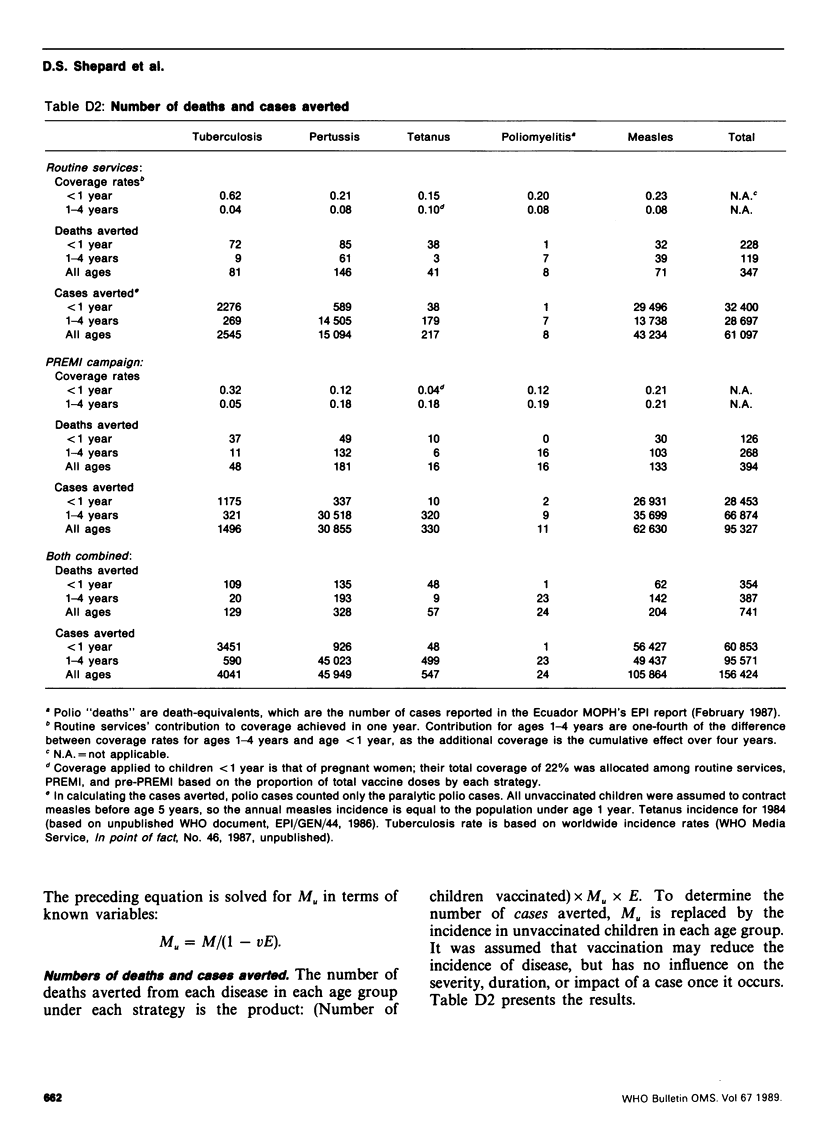
Selected References
These references are in PubMed. This may not be the complete list of references from this article.
- Barnum H. N., Tarantola D., Setiady I. F. Cost-effectiveness of an immunization programme in Indonisia. Bull World Health Organ. 1980;58(3):499–503. [PMC free article] [PubMed] [Google Scholar]
- Creese A. L., Sriyabbaya N., Casabal G., Wiseso G. Cost-effectiveness appraisal of immunization programmes. Bull World Health Organ. 1982;60(4):621–632. [PMC free article] [PubMed] [Google Scholar]
- Mills A. Survey and examples of economic evaluation of health programmes in developing countries. World Health Stat Q. 1985;38(4):402–431. [PubMed] [Google Scholar]
- Robertson R. L., Davis J. H., Jobe K. Service volume and other factors affecting the costs of immunizations in the Gambia. Bull World Health Organ. 1984;62(5):729–736. [PMC free article] [PubMed] [Google Scholar]
- Shepard D. S., Sanoh L., Coffi E. Cost-effectiveness of the expanded programme on immunization in the Ivory Coast: a preliminary assessment. Soc Sci Med. 1986;22(3):369–377. doi: 10.1016/0277-9536(86)90136-x. [DOI] [PubMed] [Google Scholar]


